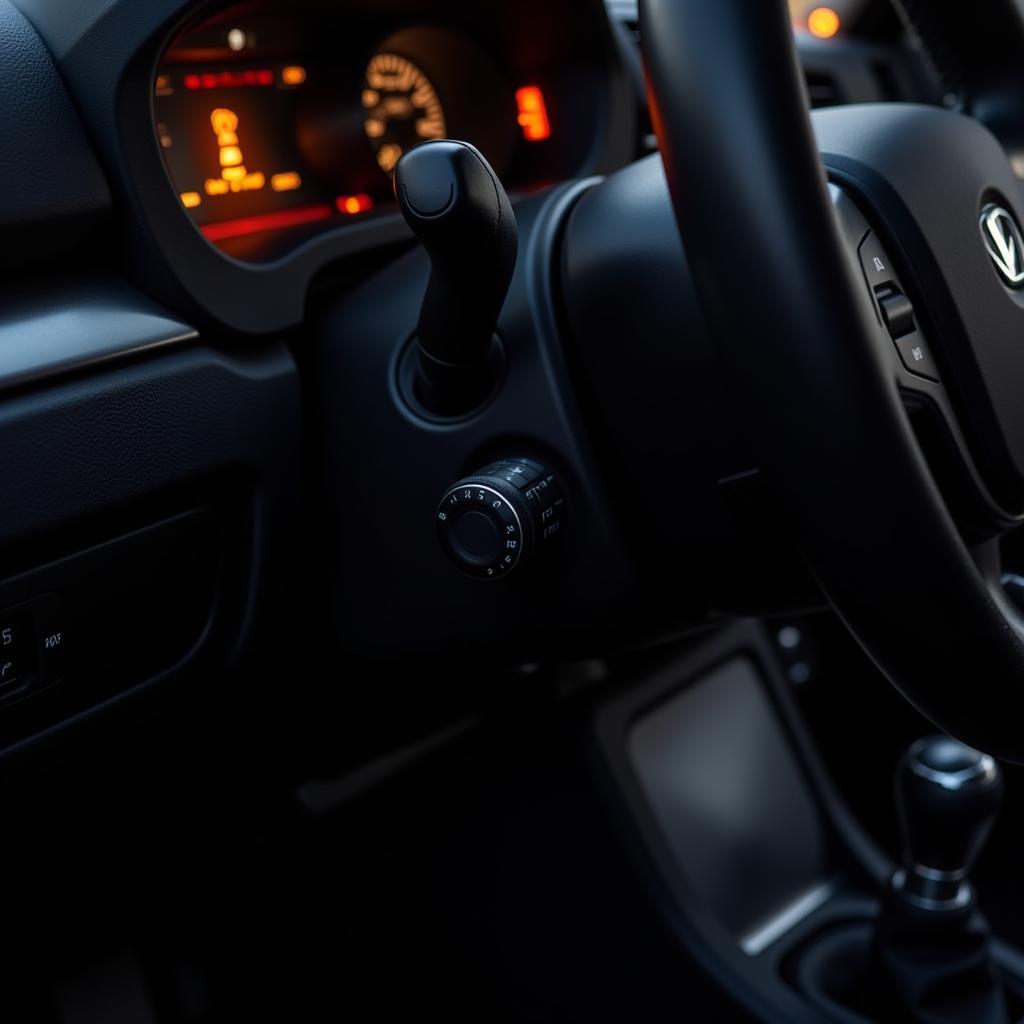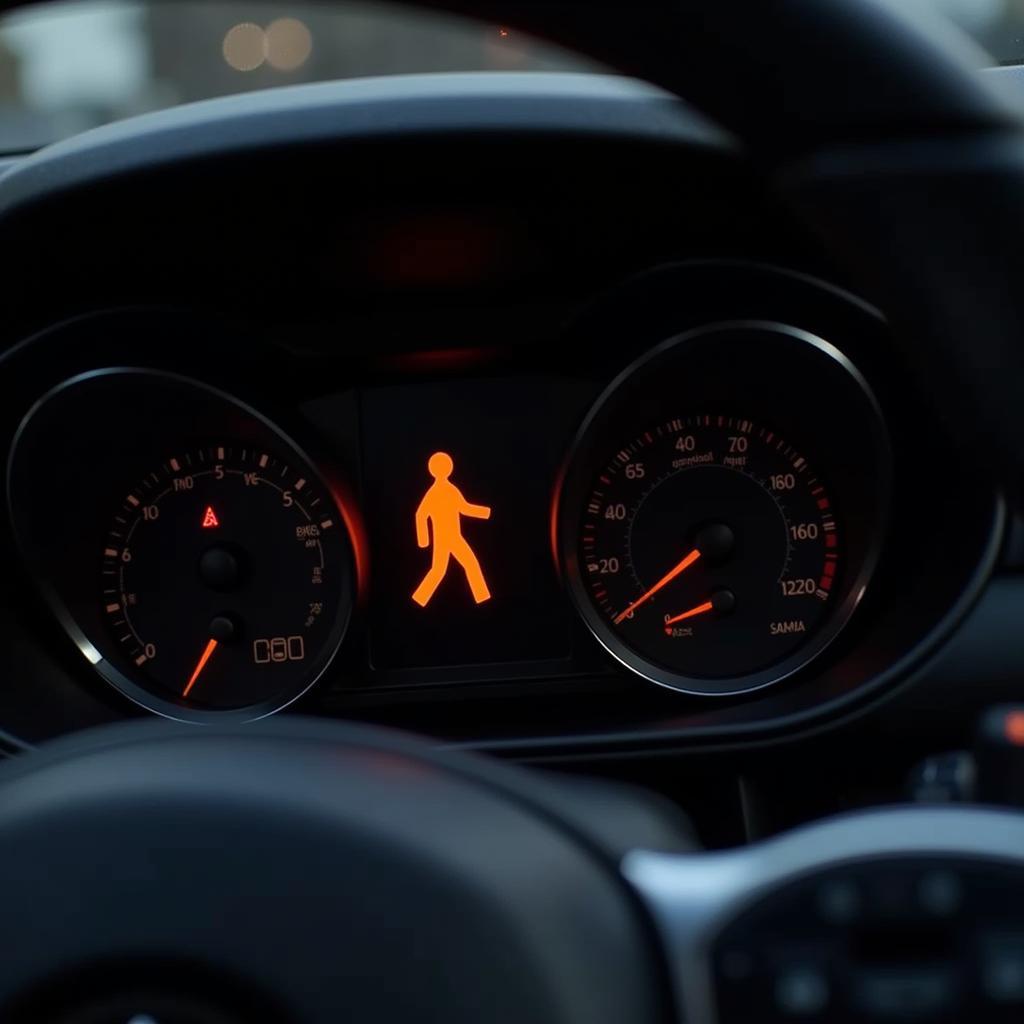The brake system warning light is one of the most important lights on your dashboard. It’s designed to get your attention and warn you of potential problems with your vehicle’s braking system. Ignoring this light could put you and others at risk, so it’s crucial to understand what triggers it and what to do when it illuminates.
Common Reasons Your Brake Warning Light Is On
There are several reasons why your brake warning light might turn on. Some are simple fixes, while others indicate more serious issues:
1. Parking Brake Is Engaged
This is the most common and least concerning reason. Always double-check that you’ve fully released the parking brake before driving.
 Car with engaged parking brake
Car with engaged parking brake
2. Low Brake Fluid
Brake fluid is essential for transmitting force from the brake pedal to the brake pads. If the fluid level is low, it could indicate a leak in the system.
Pro Tip from John Miller, Automotive Engineer: “Never ignore a low brake fluid warning. Continuing to drive with a leak can lead to brake failure.”
3. Worn Brake Pads
Brake pads have wear indicators that create a squealing sound when they’re thin. If ignored, the brake warning light may come on, signifying the need for immediate replacement.
4. Brake System Malfunction
A malfunctioning ABS (Anti-lock Braking System) module, faulty sensors, or issues with the hydraulic system can all trigger the warning light.
Expert Insight from Sarah Thompson, Senior Mechanic: “Modern cars have complex electronic brake systems. If you suspect a malfunction beyond low fluid or worn pads, it’s crucial to have it diagnosed by a professional.”
What To Do When Your Brake Warning Light Comes On
- Safely Pull Over: As soon as it’s safe, pull your car over to the side of the road.
- Check the Parking Brake: Ensure the parking brake is fully released.
- Inspect the Brake Fluid: If you feel comfortable, carefully check the brake fluid level.
- Call for Assistance: If the light persists or you notice any leaks, do not continue driving. Contact a mechanic or towing service immediately.
Conclusion
The brake warning light is a critical safety feature in your vehicle. Understanding what triggers it and responding appropriately can mean the difference between a minor inconvenience and a serious accident. Never ignore this warning light—always err on the side of caution and have your brakes inspected promptly by a qualified professional.

